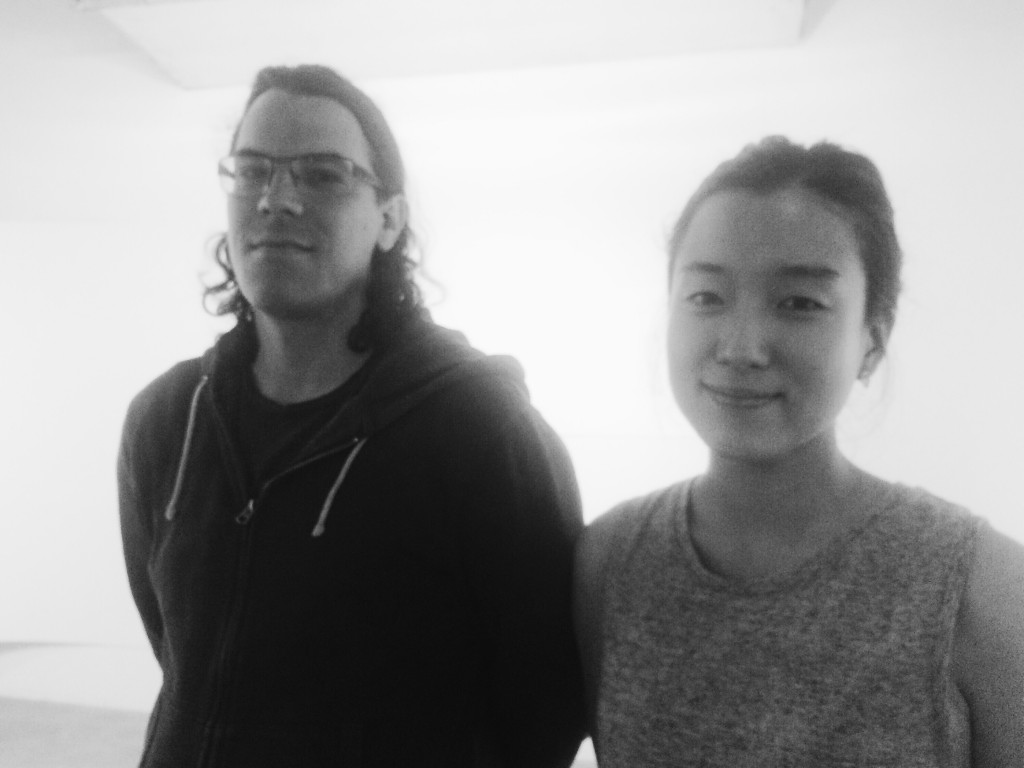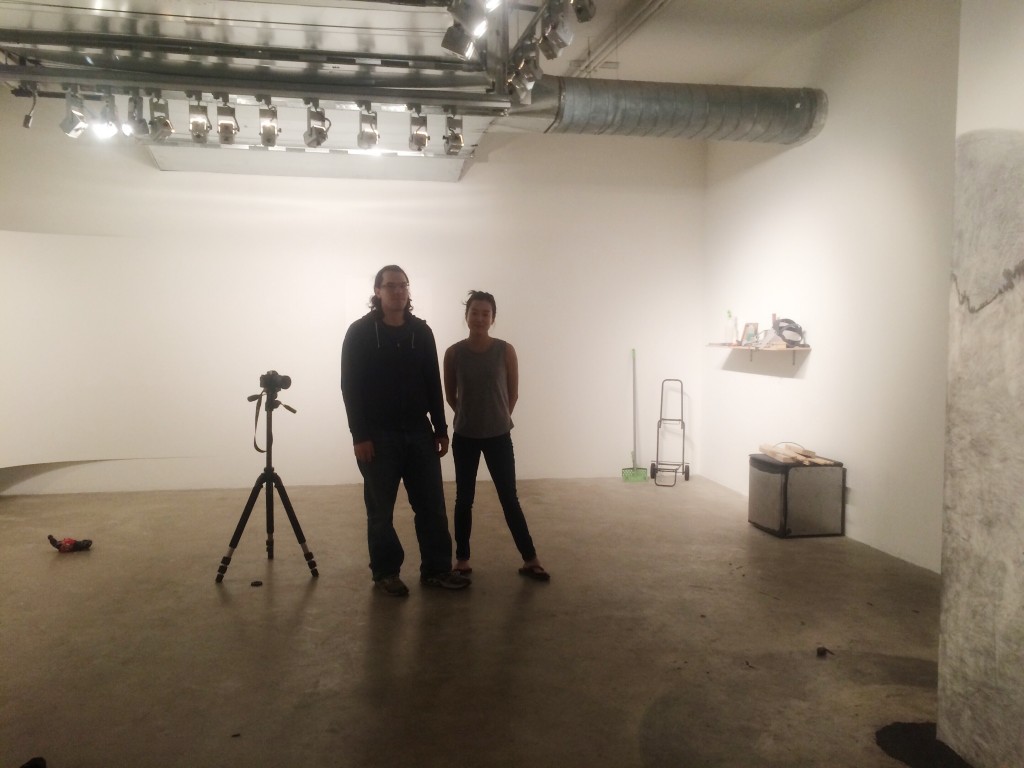At the beginning of the 2015 MFA Show process, numerous artists expressed interest in exhibiting work in a private, single room within the Sullivan Galleries. Due to the limited number of installation rooms in the galleries and the large amount of graduating MFA students, shared space became a reality for many artists participating in this year’s show. Though not part of many artists’ initial installation vision, shared space has provided these artists many exciting challenges and opportunities to respond to surrounding work.
During installation week, we’ve seen artists embracing shared space, working together to create more compelling interactions between artists. These moments are what separates the MFA Show from an art fair, fostering a sense of exhibition-making and collaboration.
I took a moment to speak with two artists, Eric Oresick and Woomin Kim, about their process of installing work in a shared space:
Woomin Kim: We’re actually in the same department and our studios are very near each other so we already knew what we each were working on for the MFA Show. We didn’t necessarily ask to be near each other in the MFA Show but we thought the relationship was nice– we were thinking about having a show together even before the MFA Show. We didn’t change our work for each other, but we brought our pieces to the galleries and decided to talk together about their installation.
We had both a concern and expectation about our works because we knew that our pieces were both very site-specific and dealt with corners in architectural space.
Eric Oresick: As soon as we knew we were sharing space, we thought about the connection between our works. We’re trying to negotiate maintaining separate integrity but still keeping a sort of dialogue between the pieces. We feel good about it at the moment. We have a shared value of keeping a lot of space in between things so that each piece can breathe. Nothing is too loud. There’s a value in investigating, and looking closer at what the material is and the condition of it. As we are installing and moving things around, we’re looking at eye levels and viewer interaction.
W: For one of my pieces, I stand at the corner and draw the boundary of my body as far as I can reach. I fill this shape up with graphite and erase it. Eventually everything will be erased and there will only be a pile of eraser shavings in the corner. I also have a shelf of personal objects that were in my studio. I sanded all of these objects and displayed them again for the show.
E: I’m thinking about my contribution to the show as a constellation of works that were made to go together. Regarding the curve I created in the corner, I wanted to have some element that was optical and physical, that could physically present some sort of transformation for the viewer. From a distance, I think there’s an intrigue about what it is in the space. In the approach, you feel your body move around the curve. I wanted that sweep to be a motion in that constellation of objects. The orientation of my drawing on the wall purposefully has an excess of white space so that there could be this sweeping motion into the picture plane of the image.
I think these two corner works are both very connected to bodily presence and understanding the subjecthood in that. It’s nice to have a variation of a shared interest in the same space.





